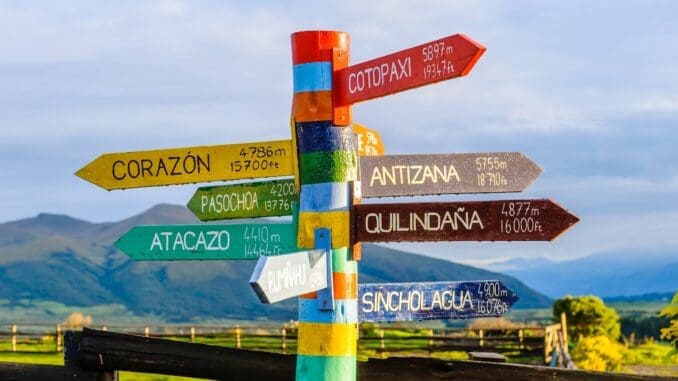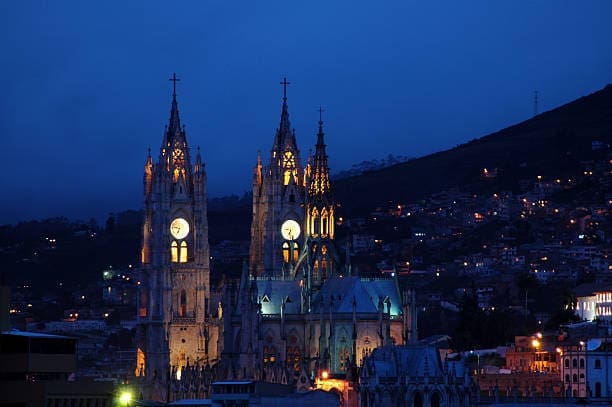
The typical person in North America equates Ecuador with the Galapagos Islands and the Amazon Rainforest. While these are well-known treasures, many more cultural influences that have shaped the nation can be found in the upper regions of the Andes, where most of the population lives. Here are some details of the beauty found just off the Pan-American Highway.
Like many students, when Spring Break came around, I was ready to get out of Michigan’s cold, cloudy weather. My better half had been working on her research project for the past year in the Andean mountains. While I’ve been to Ecuador with her before, I’ve never had a chance to explore areas outside of Quito. And since it was time for Carnival throughout the world, it was a perfect opportunity to learn more about the diverse cultures in the Ecuadorian Andes.

Capital of Ecuador
Quito
The capital of Ecuador, located in the North Central Andes, Quito, is a city experiencing a population explosion. If you had the opportunity to see Proof of Life with Russell Crowe, then you’ve seen Quito before (it was the city portrayed in the fictional country of Tecala – which, of course, was actually Ecuador). Close to 2 million people live along a ridge with a width no greater than 3 to 4 miles along the base of Volcano Pichincha. It’s also located only several miles south of the Equator.
This combination of altitude (close to 10,000 feet above sea level) and location gives Quito a consistent temperature throughout the year, from 55 F at night to 75 F during the day. Old Town is the best-known tourist attraction in the area, besides the monument at the Equator. In Old Town, visitors will find beautiful Spanish colonial buildings and cathedrals that will take you back in time. Large open plazas, people crowding down market streets, and the sound of traditional Andean flute music make this a great location to explore.
Carnival
Ambato, Rio Bamba, and Banos
Several hours south of Quito are three cities in Ecuador that are known for Carnival celebrations. Ambato has vast festivals, with many people lining the streets to watch parades. Rio Bamba is a smaller, beautiful city further south with more traditional concerts and lots of water fights (a popular craze associated with Carnival).
Banos is a small town bordering the Andes and the Amazon. The celebrations begin to take on more of a tropical feel in this town with brightly colored outfits and costumes (maybe it’s the heat!). Banos is also known for being a top destination for outdoor adventure – from mountain biking and climbing to rafting, it’s all there!
Cuy
To foreigners, a fascinating part of Ecuadorian culture is Cuy (pronounced with a “Q” sound). Cuy are Ecuadorian guinea pigs that are a very important part of the Andean culture, particularly in the country’s southern regions. They are raised on farms for food and are served on special occasions. And no, they do not taste like chicken; they have a unique flavor.
Due to their high protein and low fat content, they are an essential food source- especially for those living in high-altitude regions. Also, Cuy is known to be an essential tool by traditionalists practicing folk medicine in determining health problems. It is said that a guinea pig can be rubbed gently against the side of an ill person. Wherever the guinea pig squeaks, it’s where an injury can be found.
There are many more places to see in the Andean region, including the famous markets of Otavalo, the thermal baths of Papallacta, and the world’s largest volcano – Cotopaxi. There is even Mascarilla, a village near the Colombian border founded by escaped slaves in the 1800s that specializes in making beautiful artisan masks.
The people, the culture, and the country of Ecuador are far too beautiful to translate into words. The Galapagos Islands and Amazon rainforest are just two of the many breathtaking faces of this amazing country.

Be the first to comment